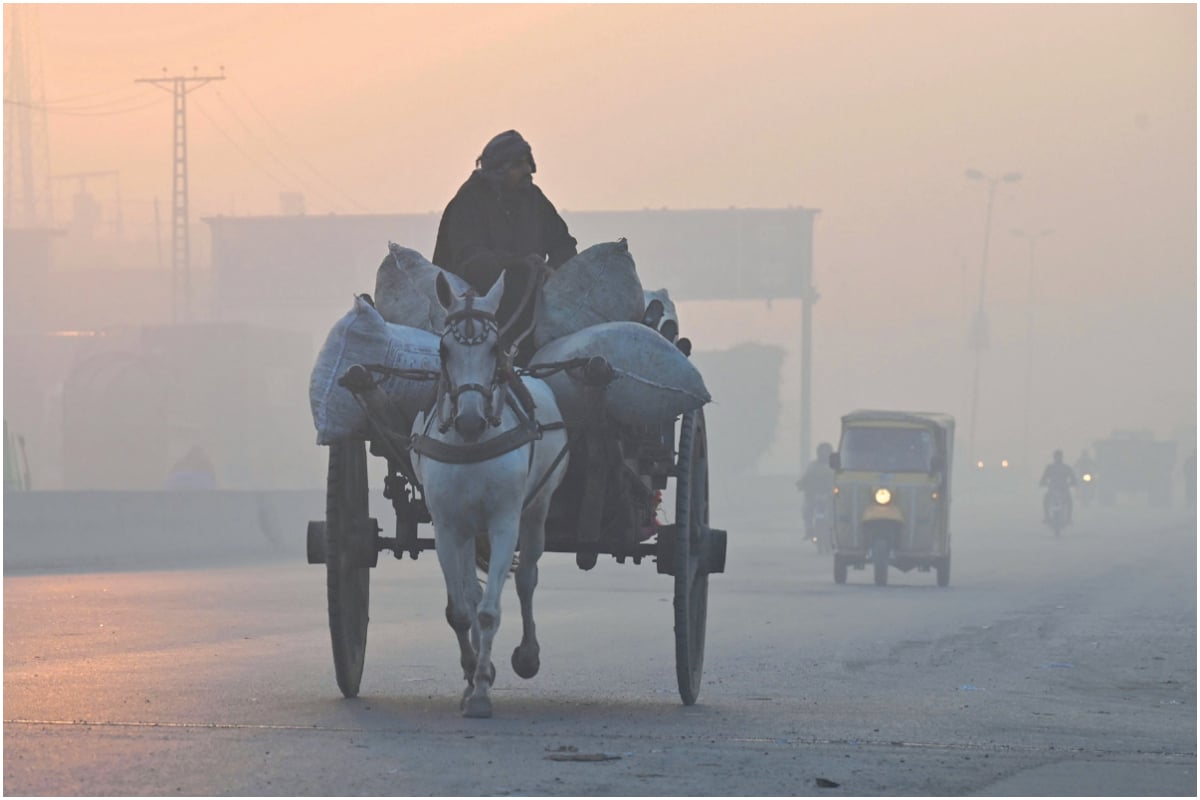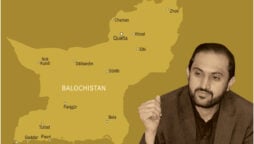
The Need to Introspect
Pakistan is a victim of climate change caused by other countries, but we cannot absolve ourselves completely
Climate change has become yet another addition to the flurry of currently trendy buzzwords. There has been much hype about the success of Pakistan’s delegation at the UN COP27 in having clinched a deal regarding the setting up of a loss and damage fund for nations most affected by climate change. This year’s catastrophic monsoon helped the government garner the attention of the international community and build a case for international support to meet the environmental challenges at home. What is conspicuously missing in the discourse, however, is the fact that, in addition to pollution generated by the world’s industrial giants, there are many home-grown factors related to Pakistan’s environmental pollution. This uncomfortable reality is pushed under the carpet.
Before lending a helping hand to Pakistan, which undeniably falls in the category of being one of the countries most vulnerable to climate change, the international community may ask the authorities what it has itself done to mitigate the environmental degradation caused by domestic factors. During the last two decades, for example, the pollution in the country’s water resources and in the air quality in cities has risen alarmingly, with visible signs of the harm this has caused to humans and the flora and fauna. But the authorities have given the issue scant attention. Apart from the initiative of the one-billion tree plantation during the tenure of the previous federal government, no concrete measure has ever been taken to improve the constantly worsening quality of the country’s air and water resources.
The impact of worldwide climate change on Pakistan is a concerning reality, but our own callousness towards environmental degradation is no less disturbing. And the apparent aversion of the authorities to clean the environment has resulted in Lahore, Karachi and Faisalabad, Pakistan’s three most populated cities, earning the distinction of being among the top most polluted cities in the world. On October 10, Punjab’s Provincial Disaster Management Authority (PDMA), declared Lahore a calamity-hit city because of intense smog. In mid-November, the city was listed as the most polluted city in the world, with an air quality index (AQI) shooting up to 279 in the morning, according to iqair.com, a website that monitors global air quality. And on certain busy days, the index was noted to spike to 481 and thereabouts. In some industrial suburbs such as Kot Lakhpat, it was as high as 613. AQI values at and below 100 are generally considered to be safe and healthy. Meanwhile, last October, Karachi was recorded at 250 particulate metres, much above the safe limit, as against 191 particulate metres in Delhi at the time.
For almost two decades, one has been hearing the clamour about air pollution in Pakistan’s major cities, and how it has become hazardous for the health of their inhabitants. But these cries have fallen on deaf ears. In winter, the authorities do take some perfunctory, random action when the smog envelopes swathes of Khyber Pakhtunkhwa, Punjab and Sindh. But no comprehensive policy and adequate infrastructure exist, or are being even considered, to improve the situation. Meetings regarding air pollution and directions issued either by the high courts or the provincial governments are annual rituals used mostly as publicity stunts.
This winter, as usual, the Punjab government established anti-smog squads which have conducted dozens of site visits of factories and filed cases against some of them for emitting unfiltered smoke in the air. However, it is a common observation that after receiving bribes, the environment department’s officers let these offenders off the hook. There are rules binding factories to have equipment installed for cleaning smoke before discharging it into the air. Why does the environment department not enforce the mandatory conditions that exist all the year round? This is because there is widespread corruption in the department.
The story of environmental degradation in Pakistan is one of abject indifference by the authorities and corruption. In 1983, the Pakistan Environmental Protect Ordnance was enforced which was subsequently replaced by the Pakistan Environmental protection Act, 1997. Under the 1983 law, a Pakistan Environmental Protection Council was established which was to hold at least two meetings each year, but it did not meet for 10 years. However, environment protection departments were created to implement the law, both at the federal and provincial levels. Finally, in 1993, the then caretaker Prime Minister, Balakh Sher Mazari, (late) took interest in an otherwise neglected subject and directed the concerned departments to hold the Council’s first meeting, which adopted the first National Environment Quality Standards (NEQs).
Almost forty years have passed since the first environmental protection law was enforced, but, apart from the tree-plantation campaign in Khyber-Pakhtunkhwa, since then, neither the federal, nor the provincial governments have a single major achievement to their credit in regard to fulfilling the law’s stated objective. Polluted rivers and sea shores, a rapidly sinking ground water table in the Punjab and smog-ridden cities testify to this failure. Instead, the environment protection departments have served as tools for corrupt government officials to milk businesses for issuing them no-objection certificates and approving environmental impact assessment reports. In the last two decades, dozens of campaigns have been launched in the provinces to ban the use of shopping plastic bags, but they are still in common use. Such campaigns only end up in enriching the corrupt officers of the environment protection departments and the district administration.
With Japan’s charity (JICA), in 2006 Pakistan installed its first air quality monitoring stations in a few big cities, including Lahore, Peshawar and Karachi, but the authorities concerned could not keep those stations functional. They shut down after a few years, and for a long time there was no air-monitoring system in place. To date, Karachi, the country’s largest city, which generates 95 per cent of Pakistan’s provincial income, has no government mechanism in place to monitor the city’s air quality; only three private monitoring systems are working in the city with a population of more than 20 million. A few years ago, Punjab installed an air quality monitoring system in Lahore, but it soon fell into disrepair. Some say it was defective to begin with, while others say it was intentionally made useless as there were fights among the officials about who would receive kickbacks in the purchase of materials for running the system. Last year, the Punjab’s environment department did not spend a single rupee of its allocated development funds because there was severe infighting between the minister and the officers about who would make money out of these projects.
In Quetta, where dust emanating from the massive stone-crushing plants and smoke arising from furnaces have badly affected the city, the air quality monitoring system has not been functional for the last six years. The provincial government has the funds to buy expensive vehicles for ministers and officers, but not to keep the air monitoring system operative.
In Khyber Pakhtunkhwa, the provincial government has done little to prevent brick kilns around Peshawar city from emitting smoke. In the Punjab, 7,000 brick kilns have been converted through zig-zag technology to reduce their harmful smoke, but the KP government has only installed this environment-friendly technology in two brick kilns.
Brick kilns in the KP, including those in the suburbs of Peshawar city, burn plastic, coal, wood and rubber in their furnaces, emitting toxic smoke in the air. The owners are wealthy and politically influential people, thus the authorities look the other way, never mind the havoc they are creating with the environment and the health of the people.
Successive governments’ neglect in enforcing environmental standards in factories, brick kilns, smoke-emitting vehicles and the burning of residue of crops has contributed to the increase in the overall average temperature in the country. Already, spring in Pakistan has almost vanished. This year, after a very harsh winter, we went directly into a severe summer, with record heat waves in even our rural areas. According to a study quoted by the Climate Data Processing Centre in 2019, Pakistan’s temperature has risen considerably since the early 1960s. By 2019, the mean annual temperature in Pakistan had, in 58 years, increased by 0.74°C. More recent changes in weather conditions lend further credence to this finding. In the last few years, for example, temperatures in Karachi city have reached the highest values in the past 75 years. According to a report by the Human Climate Horizons platform, a joint project of the United Nations Development Programme (UNDP) and the Climate Impact Lab, Pakistan’s average annual temperature will surge to 22.4 degrees Celsius within the next 15 years. The report predicts that on average, the number of very warm days (above 35 Celsius) in a year will be 124 by the end of 2030. The temperature above 35 degrees may cause death due to dehydration.
Most air pollution in big cities like Lahore and Karachi owes to the emissions from vehicles. The use of fossil fuel by vehicles in cities has turned them into living hells. For example, more than six million vehicles, including cars, trucks and motorbikes, are registered in Lahore. In the busy hours, more than 1.5 million vehicles ply the roads. Cargo and passenger transport that enters the city daily from other parts of the country is in addition to this. Vehicles run on petrol emit nitrogen oxides, and those fueled by diesel, release sulphur oxides in the air. In the daytime, the quantity of nitrogen oxides in the city’s air on crowded streets exceeds the normal value six times over. No mechanism exists to enforce smoke-emission standards on motor vehicles. How a reduction in vehicular traffic improves air quality and brings respite from pollution could be seen during the Covid lockdown in 2019-20. The air became clean and allergies and cases of pollution-related respiratory ailments subsided. As the lockdown was lifted and the volume of traffic soared on roads in the later months of 2020, the smog returned, enveloping the main cities of the Punjab. By winter 2020, Lahore had left Delhi behind, earning the title the Indian capital earlier held, as the world’s most polluted city.
Last month, the Punjab government announced that it would introduce electric mini-cars in place of motorcycle-rickshaws and would encourage electric bikes and cars in the province. The Punjab government has recently struck an agreement with the Chinese government for the instalment of air purification towers to control smog, especially in Lahore. These towers will be installed near the areas bordering those that are victims of smog flows owing to the burning of crop residue, and near the industrial areas of the city. We have been told that the provincial government has imposed an emergency to check smog, but little is visible in this regard on the ground. The governments keep making such announcements which seldom materialise, or take many, many years to take effect. Meanwhile, this fiscal year, the Punjab government has spent Rs 350 million to buy new cars for provincial ministers, and has started work on a Rs 4.5-billion project to re-design Kalma Chowk. These are the funds that ideally should have been used to buy electric buses for schools and colleges to reduce the traffic on the roads. The government’s skewed of priorities, mostly driven by politicians’ and senior officers’ personal interests — such as keeping an eye on pocketing kickbacks in construction projects — constitute the main hurdle in tackling environmental issues.
Instead of the government taking remedial measures to improve the air quality in big cities, it has allowed the reckless destruction of the environment by cutting trees for the widening of roads and the mushroom growth of housing projects. For example, last year, nearly 6000 acres of mango orchards were chopped down to make ground for housing societies in Multan city without any environmental assessment. The owners of housing societies are wealthy influentials with connections in state institutions, so they are practically above the law. In Islamabad, a link road is being built cutting across the campus of the Quaid-e-Azam University, without any obligatory environmental assessment of the project having been conducted. A major reason for Lahore’s deteriorating air quality is the ongoing elimination of the green lands, woods and fields in the suburbs, as housing projects have sprung up. Greed for real estate has played havoc with the city.
So far, the government has used the slogan of pollution, a clean environment and the impact of climate change to rake in funds from international donors. In most cases, the funds have largely been misused and pilfered by government high-ups. Little has been achieved on the ground. As things stand today, indifference, incompetence and corruption are the key words that define the governments’ environmental protection policy and actions. The alarming deterioration in air quality requires that the government takes bold policy decisions to switch the transport system and industries to cleaner fuels and smarter technologies in a short span of time. The government needs to spend more money to buy electric buses for public transport than on widening the roads in the cities. Strict legal and administrative measures are needed to prevent the burning of solid waste and residue in sugarcane and paddy fields.
Last week, the Lahore High Court said that the government has failed in controlling smog in the city and directed all schools to teach students online for three days a week and the government offices to work from home for two days a week so as to reduce traffic load and emission of smoke.
Above all, unplanned urbanisation has to be checked to save mega cities from sliding further down the hill. The government needs to focus on providing civic amenities, including health and education facilities to medium-sized cities so as to slow down the migration of people towards major cities. Air quality in cities is not going to improve through official statements and meetings that are mostly meant to fool the public in times of emergency. Pakistan’s two major environmental issues — the pollution of rivers due to dumping waste water and solid waste from the cities into them, and air pollution in big cities mainly owing to a heavy load of vehicular traffic – have very little to do with worldwide climate changes. It will be good for us to put our house in order while seeking the world’s help.
Catch all the National Nerve News, Breaking News Event and Latest News Updates on The BOL News
Download The BOL News App to get the Daily News Update & Live News.












 Read the complete story text.
Read the complete story text. Listen to audio of the story.
Listen to audio of the story.